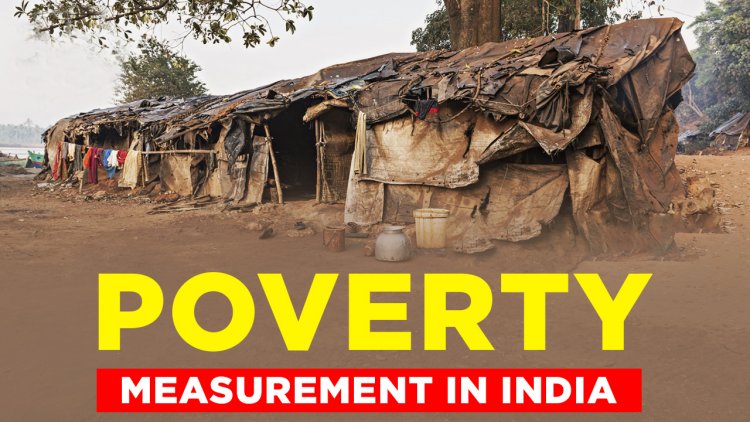Poverty: Conflicting Views on Methodology of Poverty Measurement
Asia News Agency

The publication of the survey of household consumption expenditure for 2023-24 by the National Statistics Office in January 2025 has been followed by estimates of poverty in India.
A report from SBI in January flags ‘a remarkable decline in rural poverty, estimated at 4.86 per cent in FY24… urban poverty estimated at 4.09 per cent’. The World Bank’s report, far more optimistic, pegs the ‘extreme poverty’ at 2.8 per cent for rural India and 1.1 per cent for urban India in 2022-23.
There have been rejoicing and criticism of these findings. Both estimates, write Pulapre Balakrishnan (honorary visiting professor, Centre for Development Studies, Thiruvananthapuram) and Aman Raj (economist based in Patna) “neglect the issue of the standard of living in India, and whether the extant methodology of poverty measurement underlying these estimates can lead to anything at all being said on the matter….”
The ‘thali’ (a plate of food) factor
Officially approved poverty measurement in India has involved “estimating the level of consumption expenditure sufficient to enable the minimum calorie intake necessary for living and working. As calories measure the energy ingested through food and drink, the methodology represents a physiological approach…..Societies have over time arrived at a geographically and culturally mediated norm for food consumption. In India, arguably, this would be represented by a ‘thali’ (a plate of food), a serving of food comprising carbohydrates, protein and vitamins….that includes rice/roti, lentils and vegetables, with dairy/meat/fish extra…”
The two authors find the ‘thali’ appropriate “as the metric by which to measure the standard of living….The price of a ‘thali’ at Rs 30 was taken from the rating agency Crisil, which calculates the cost of a home-cooked ‘thali’ using data on the cost of its ingredients sourced from the east, west, north and south of India…”
The argument
The two authors found that “in 2023-24, up to 40 per cent of the rural population could not afford two thalis a day. In urban India, up to 10 per cent of the population could not afford two thalis a day. These findings indicate that levels of food deprivation are much higher than what are implied by the poverty estimates using the same data, which we recounted at the outset. A possible reason for the difference between our estimate of the standard of living and the poverty estimates from the SBI and the World Bank is that we take the expenditure on food as opposed to total consumption expenditure as the relevant measure of consumption. The reasoning was as follows. There are five items of essential expenditure – housing, conveyance, telephony, health and education – that a household cannot forgo if it is to ensure its livelihood. Now, expenditure on food ends up as the residual. Therefore, when appraising the standard of living in terms of food consumption, basing it on the actual expenditure on food would be realistic. Poverty estimation needs a food standard that is based on goods. The ‘thali' index serves this purpose while being compatible with accounting for the calorific value of food intake.”
We may now address the issue of subsidies. Basing their argument on the much-publicised recent estimates of poverty, some observers have queried whether subsidies in general should be persisted with in economic policy. We believe that this is a discussion that needs to take place, as for too long the discourse on subsidies has been hijacked by political parties to justify competitive welfarism. However, our findings using a thali index of consumption implies that the food subsidy needs more to be rationalised rather than eliminated. For instance, in rural India, the per capita subsidy at the 70th percentile is not much lower than it is at the fifth, even though those in the former class can afford more than twice the number of thalis even without subsidisation. Eliminating the food subsidy at the upper reaches of the distribution while enhancing it at the lower levels would now be optimal.
















